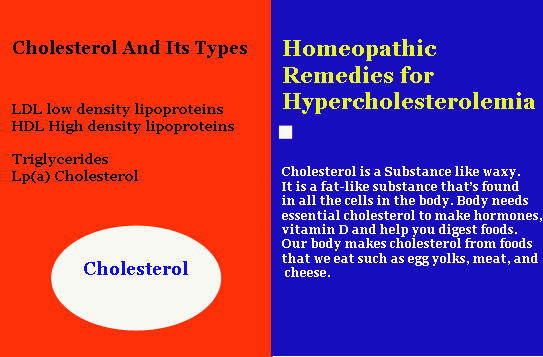
Cholesterol And Its Types
What is Cholesterol?
Cholesterol is a Substance like waxy. It is a fat-like substance that’s found in all the cells in the body. Body needs essential cholesterol to make hormones, vitamin D and help you digest foods. Our body makes cholesterol from foods that we eat such as egg yolks, meat, and cheese. To understand about cholesterol we must know well about cholesterol and its types.
(ko-LES-ter-ol)
Cholesterol is very important for human health. Some hormones, Vitamin-D and some other substances are necessary for food digestion. The cholesterol is a big source of production hormones, Vitamin-D and other necessary substances. Our body need essential quantity of cholesterol. Our body produces the cholesterol according to the body need. It is necessary for us to know about cholesterol and its types.
How our body produces the cholesterol and from which substances.
Our body produces cholesterol from food that we eat. our body produces the essential amount of cholesterol and mixes it in the blood. The cholesterol travels into the whole body through the bloodstream in small package. These packages called lipoproteins. These packages contain lipid (fat) and proteins.
Cholesterol And Its Types
There are two types of lipoproteins.
LDL low density lipoproteins
HDL High density lipoproteins
Both types of lipoproteins are important for human health. According to the medical scientist low destiny lipoproteins a bad cholesterol whereas the high destiny lipoproteins is a good cholesterol.
In the case of, where the LDL is greater than normal value of HDL, it leads to a build up cholesterol in the arteries. This condition may can risk of blockage or narrow the blood vessels.
HDL is considered a good cholesterol because it carries cholesterol from other parts of body to the liver and liver removes extra cholesterol from blood.
What is High Blood Cholesterol?
In the body essential quantity of cholesterol must present to good healthy condition. some time the quantity of cholesterol becomes high and sometime low. In the high blood cholesterol condition the cholesterol level becomes in much more level than normal value.
There are no any sign or symptom appears in case of high cholesterol level in the body and most of the people does not have aware about their high cholesterol level. As above mention, the LDL is a type of bad cholesterol and the people who have high LDL level in the body are on a greater risk of getting coronary heart disease, also called coronary artery disease. Whereas the low level of LDL is less chance of heart diseases.
Good Cholesterol vs. Bad Cholesterol
Cholesterol is a such substance who does not dissolve in the blood. It travels in the whole body through the bloodstream caring lipoproteins. Lipoproteins is a collection of two substances lipid and proteins.
There are two type of chelesterol. LDL and HDL.
Cholesterol contain level of triglyceride about 20% in it and in total cholesterol account, We can determine this level through blood test.
LDL (Bad) Cholesterol
To the medical physicians, LDL is a bad cholesterol because it contributes to plaque in the blood vessels. Along with plaque it also contributes a thick and hard deposit that can clog and narrow the arteries and destroy the flexibility of arteries.
Blocked in the arteries condition called atherosclerosis. Heart attack and arteries blockage may can occur due to clots forming in the arteries. There are is another condition in which the plaque develop in the arteries and in result arteries become narrow, this condition called peripheral.
Cholesterol and Breast Cancer
HDL (Good) Cholesterol
HDL Good Cholesterol
High density lipoproteins is considered as a good cholesterol. This type of cholesterol helps to remove bad cholesterol from the arteries.
Medical scientist and physician say that HDL not only clean the arteries but also keep the LDL cholesterol away from the arteries and send back to the liver. In the liver LDL is broken down and pushed out from the body. High level of HDL provide protection against the stroke and heart attack as well. On the other hand low level of HDL is indicator for increase the risk of heart diseases.
Some other type of cholesterol ( Cholesterol And Its Types )
Triglycerides
Triglycerides is one type of the fat types.
Its duty is to collect and store excess energy from foods that we eat. presence of the high level of Triglycerides in the blood is caused LDL.
Due to high level of triglycerides in the blood, it is associated with atherosclerosis. Being high level in the blood it increases the chances of being overweight and obese.
Due to high level of triglycerides in the blood with cigarette smoking, physical inactivity, excess alcohol consumption and a diet very high in carbohydrates (more than 60 percent of total calories).
Due to genetic disorders or any disease sometimes the level of triglycerides in the blood may can increase. In People, due to high rate of triglycerides the cholesterol level can increase with high LDL cholesterol (bad) level and a low HDL cholesterol (good) level. People with heart diseases and diabetes type 2 are observed with high triglyceride levels.
Lp(a) Cholesterol
Another type of cholesterol named Lp(a) Cholesterol, is found in the body. The cause of this type of cholesterol is genetic variation of LDL (bad) cholesterol. Du to this type, it is possibility of premature development of fatty deposits in arteries. It is difficult to understand in the body. This type of cholesterol usually interact with substances found in artery walls and contribute to the build up of fatty deposits.